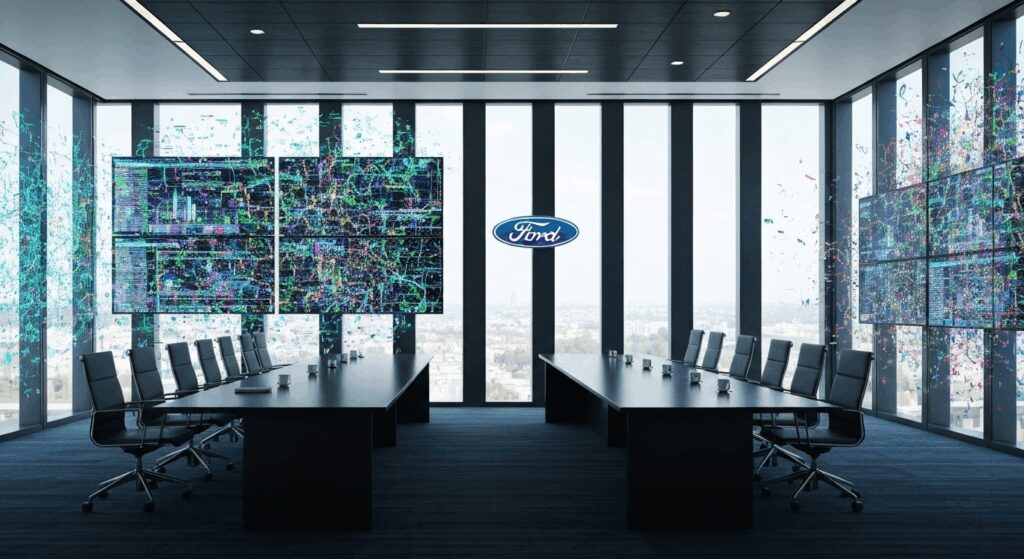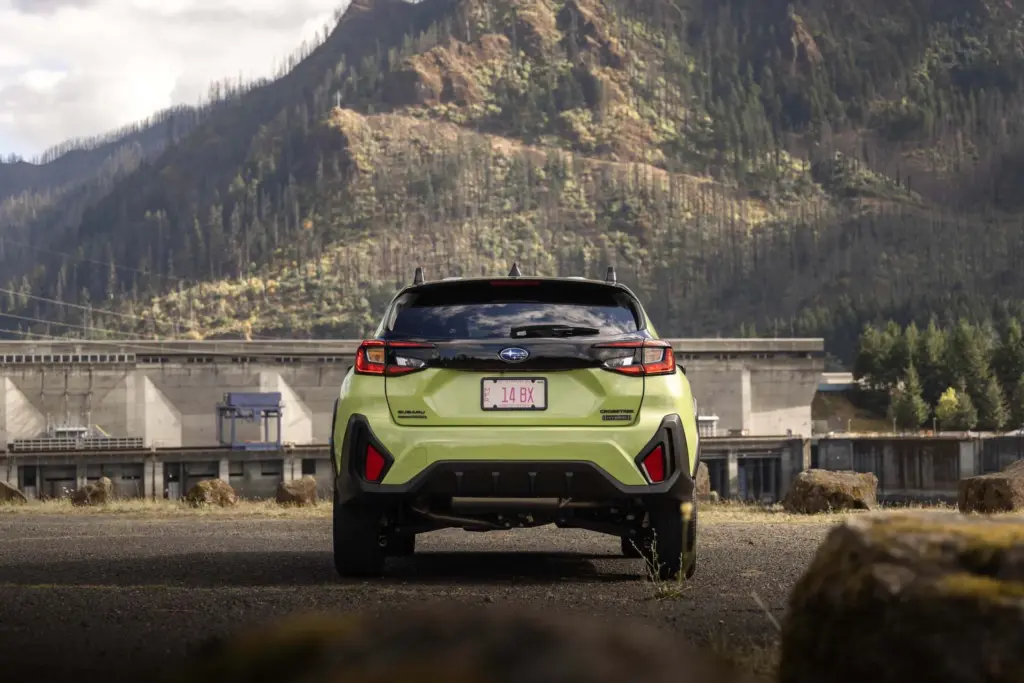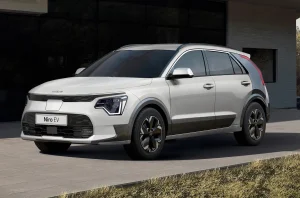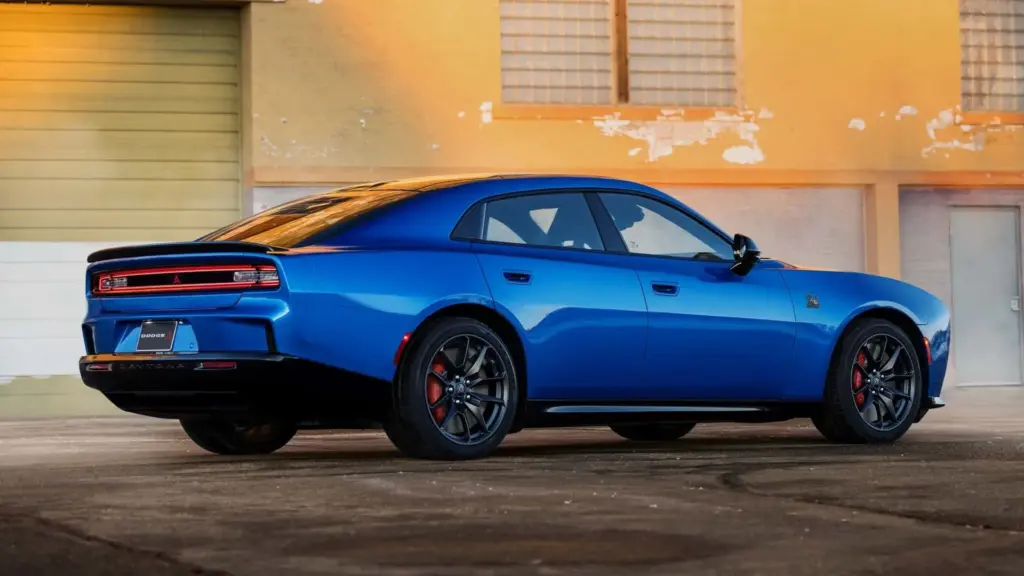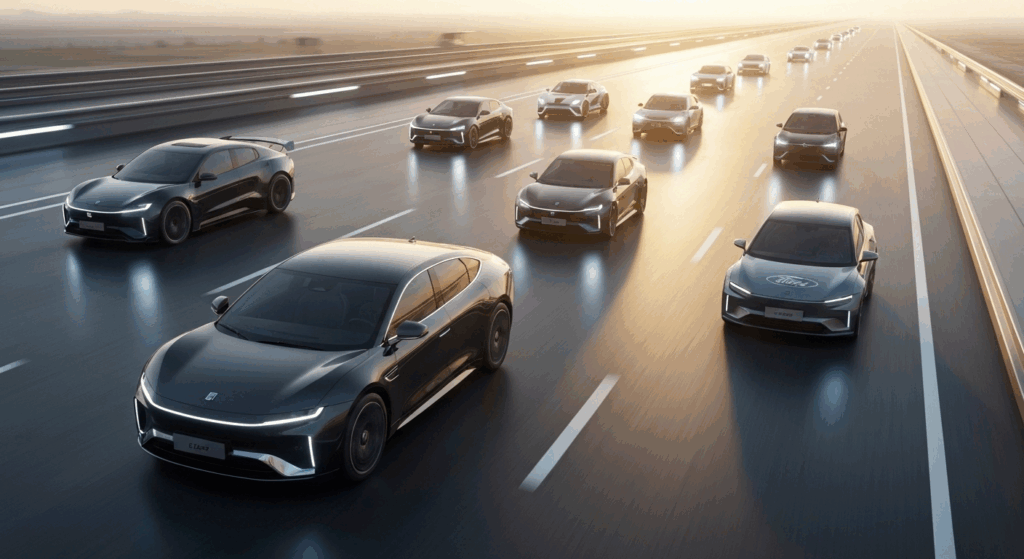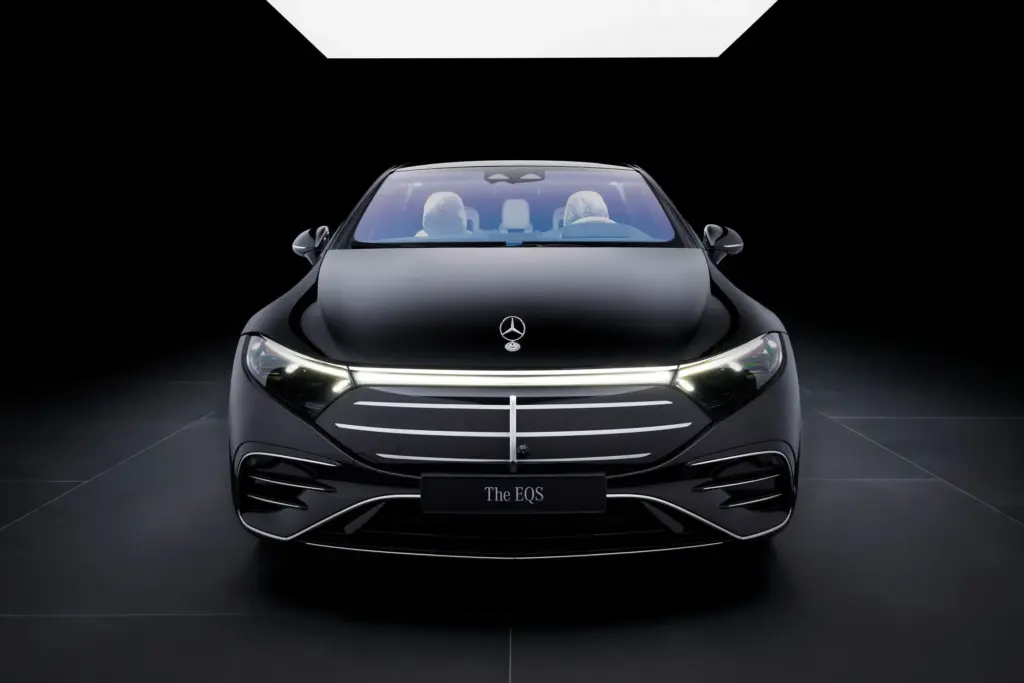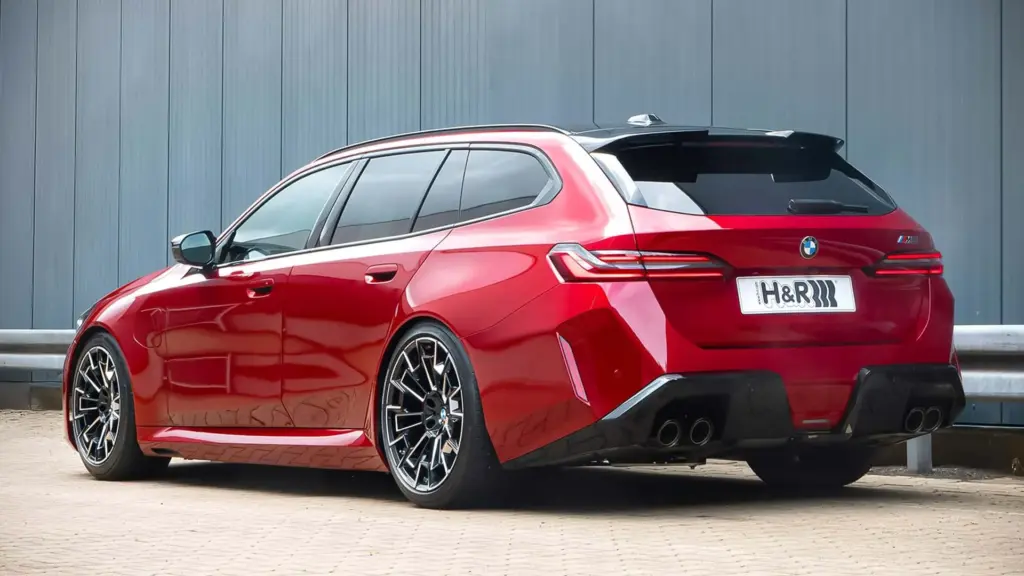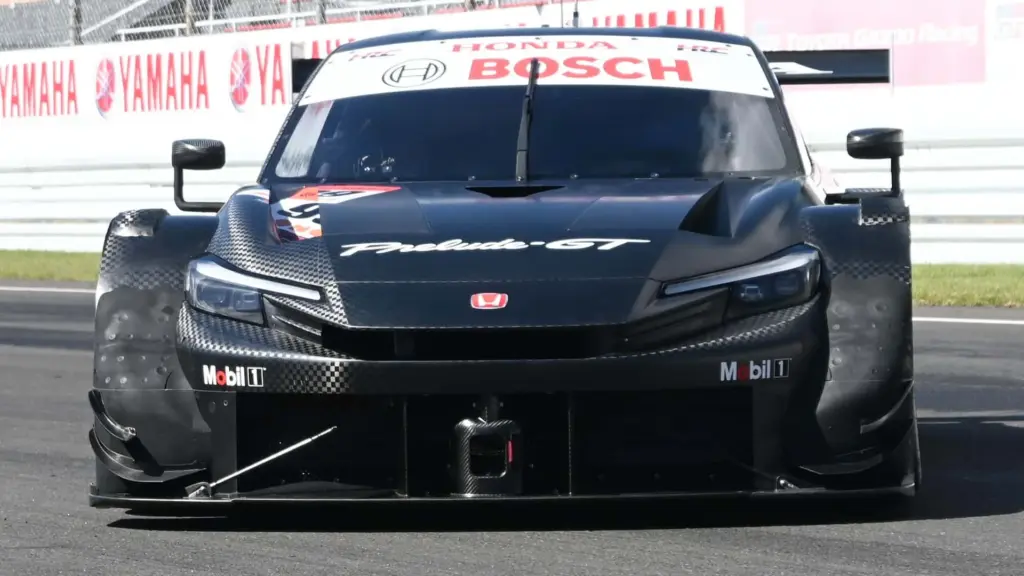If you think the world of sports cars has already been taken over by electric batteries, get ready: the Lotus Emira 2026 aims to be the final scream of the combustion engine and still rub in the faces of rivals everything it means to lose the soul. Lotus promised a no-nonsense car, with blood in its eyes, open-hearted and with power steering, even though the market is flooded with sterile electric vehicles. Let’s see if this Emira lives up to the hype or is just another retired hero on the shelf?
Does the Lotus Emira 2026 truly deliver an authentic analog experience?
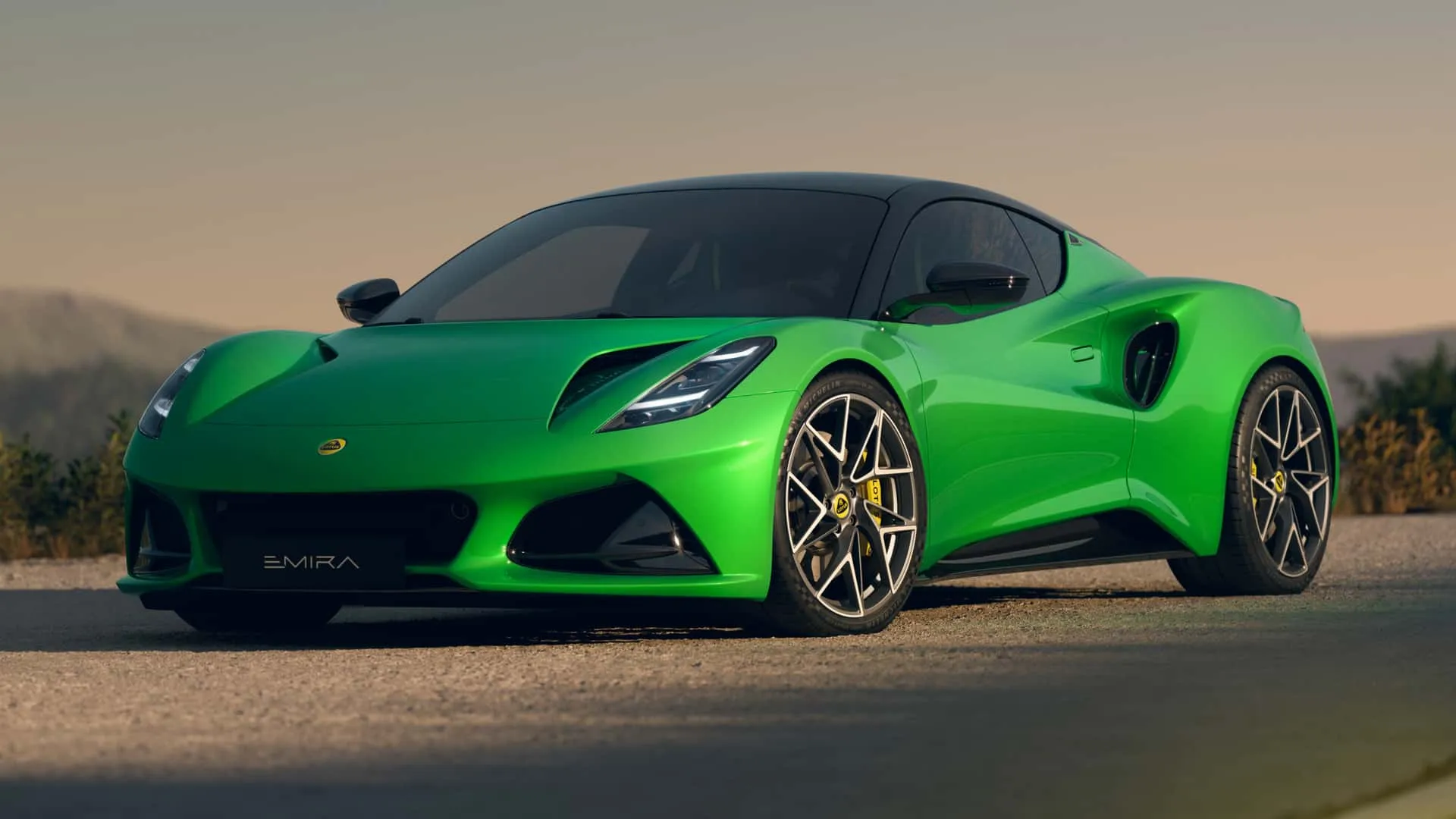
The Emira 2026 is one of the few survivors that offers that raw mechanical pleasure in driving. It’s not just enthusiast talk: electro-hydraulic steering, manual transmission with V6, double wishbone suspension on both axles, all ready to remind you why this car exists. It’s no exaggeration: heavy steering, telepathic feedback— the kind of sensitivity that Porsche or Alpine, with 100% electric steering, would sweat—or rather, cry—to match.
Lotus has built a glued aluminum chassis, fine-tuned Bilstein suspension, and recalibrated systems for 2026. Redesigned the cooling system, reduced weight, increased the robustness of the manual transmission, and fine-tuned the AMG DCT. It’s an obsession with detail, considering some people (rightly so) expect a high level, especially given the prices comparable to a Porsche Cayman GTS 4.0. And yes, plenty of drama: the supercharged V6 is literally a kick in the teeth to monotony, with 400 hp, 0-60 mph in less than 4.3 seconds, limited to 180 mph.
What trims, engines, and what are the differences among Emira Turbo, Turbo SE, and V6 SE?
The 2026 Emira lineup has been dissected. It now has three versions: Emira Turbo (entry-level, 360 hp, AMG 2.0 turbo engine), Emira Turbo SE (400 hp, same AMG, but all track-ready), and V6 SE (the analog king, 3.5 supercharged V6, 400 hp). The old base V6 has become a collector’s item, only available in the fully loaded SE with sporty accessories. They replaced the old entry model with the modern AMG engine in an attempt to attract customers away from the Alpine A110, Supra, or even the ever-unbearable base Porsche Cayman.
The differences? The V6 is for those who want visceral driving—manual, LSD, plenty of Alcantara, and no excuses. The Turbo SE appeals to the track, featuring an 8-speed DCT, launch control, sporty exhaust, and huge twin-piece brakes. The Turbo is a stepping stone: fast without breaking the bank but still in Lotus’s tune.
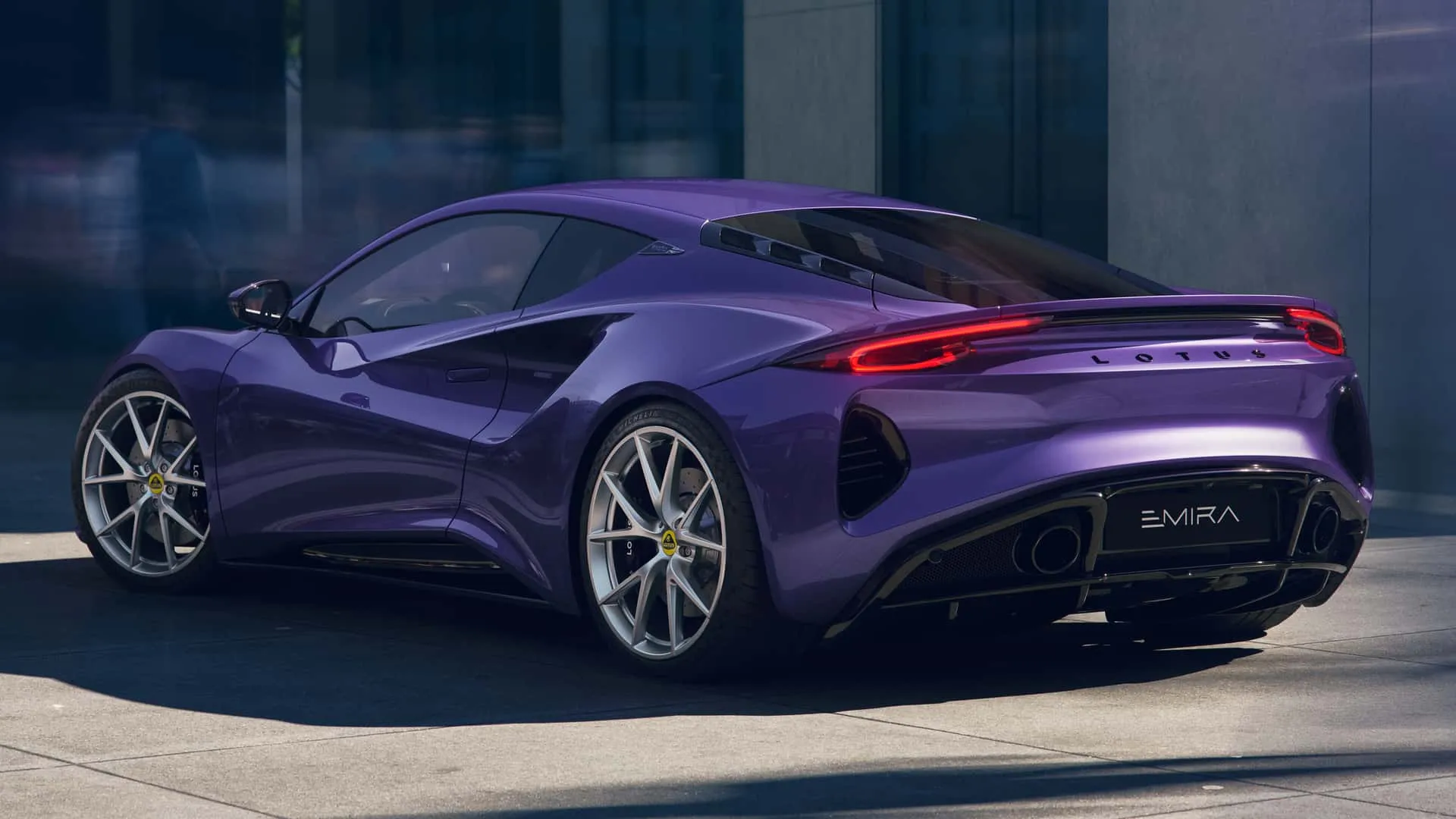
Quick overview of key differences:
- V6 SE: Toyota 3.5 V6 supercharged engine, manual or 6-speed automatic, 400 hp, pure analog experience
- Turbo SE: AMG 2.0 turbo, 8-speed DCT, 400 hp, full track package
- Turbo: AMG 2.0 turbo, 8-speed DCT, 360 hp, more rational and affordable
Does the design and interior of the Emira 2026 justify its price?
Let’s be honest: those who bought Lotus until recently didn’t care much about finish quality, but for 2026, they’ve stepped up. The Emira looks like a mini supercar: inspired by the Lotus Evija, with aggressive lines, functional aerodynamic intakes and outlets, vibrant color options, and “Racing Line” packages that catch the eye. Don’t settle for less visual drama— the Emira turns heads on streets and meetups, while the Cayman barely gets a yawn.
Inside, the leap is huge: 12.3” digital dash, 10.25” center display, wireless Apple CarPlay and Android Auto, 12-way power seats, Alcantara/leather trim, even cupholders and compartments that actually hold stuff. The KEF 560W sound system finally lives up to expectations. Missing the frunk? Yes. The Cayman comes out ahead in practicality, but nobody buys a Lotus to run errands to IKEA, right?
Why is the Emira called an emotional purchase, not a rational one? Is it worth the risk?
Buying an Emira is for the true enthusiast, not for spreadsheet-chasing engineers. It’s beyond performance or specs: it’s about legacy, exclusivity— you know, that story of “the last combustion Lotus” (maybe even in history). Are you willing to pay between $106,900 and $112,900 just for the joy of driving something with power steering, a screaming engine behind you, and knowing Porsche and Alpine are trying to catch up?
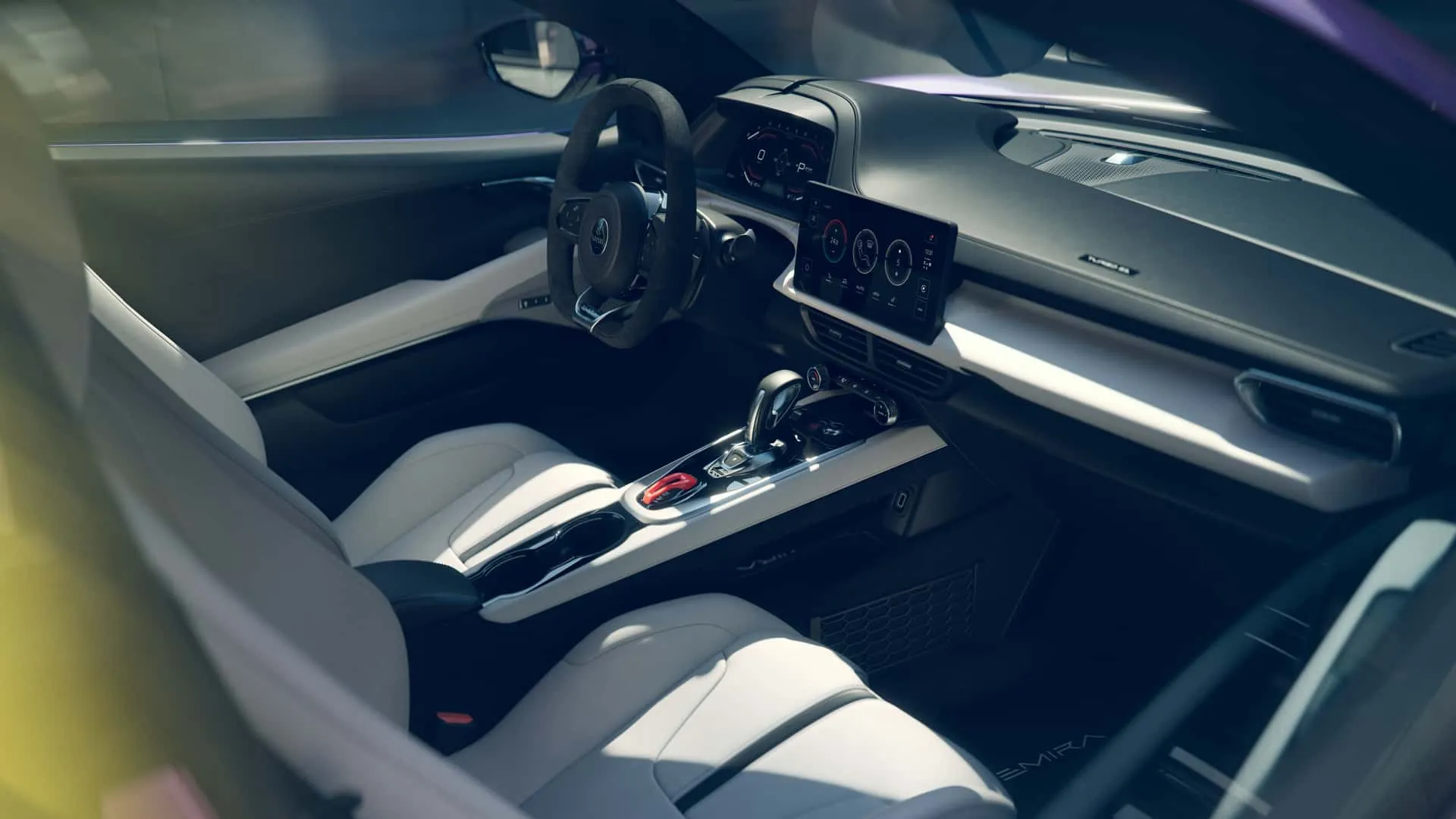
The risk is real: the V6 engine might disappear from the market, and the global supply chain for parts is literally chaos. The AMG Turbo models have better assurance of continuity. In short: you buy emotion, drama, history, and accept the potential long-term frustrations with after-sales or parts shortages. For different experiences (and more rational segments), it’s worth comparing with cars like the Hyundai Santa Fe Hybrid, which will make you think twice before signing on any current deal.
What weighs more in the decision? Consider these contrasts:
- Supercar design vs. just okay interior finish (for the price)
- Raw visceral experience vs. risk of warranty/motor issues
- Exclusivity vs. limited service in the real world
- Unique story vs. questionable practicality
How does the Lotus Emira 2026 compare to Porsche Cayman and Alpine A110 in a head-to-head?
This is that philosophical rivalry: the Emira V6 SE targets the Cayman GTS 4.0, both nearing 400 hp, both with manual options, both with racing blood. But while Porsche’s 4.0 boxer is a symphony of noise and clinical precision, Lotus delivers brutal punch and raw low-end response— neither does poorly, but Lotus is less refined, more wild.
Interior and build quality? Porsche’s nearly flawless, making the Emira look beginner-level in this area. Handling? The Emira outshines with real feedback, something Alpine and Porsche only come close to. The Alpine, however, weighs 300 kg less, offers incredible agility, but sacrifices power and that dream manual gearbox only the Emira offers. For those who value the driving position and feedback, this Lotus is another planet. If you’re into fierce rivals and insane electric performance, check out the Rimac Nevera, redefining the limits of how fast something can be today.
Quick comparison table:
- Emira V6 SE: 3.5 V6 supercharged, 400 hp, ~3,200 lbs, power steering
- Porsche Cayman GTS: 4.0 boxer, 394 hp, ~3,150 lbs, electric steering
- Alpine A110 S: 1.8 turbo, 300 hp, ~2,425 lbs, DCT only
What are the prices, availability, and challenges for purchasing the Lotus Emira 2026 internationally?
The Emira aims for the premium market, with prices starting at $106,900 for the Turbo, up to $112,900 for the V6 SE (in Europe, between €97,500 and €117,500). Exclusive allocation and high margins, while Porsche and Alpine, though expensive, have larger volume and more robust support. Will you want it? Prepare your wallet— options and taxes can inflate the final price even more.
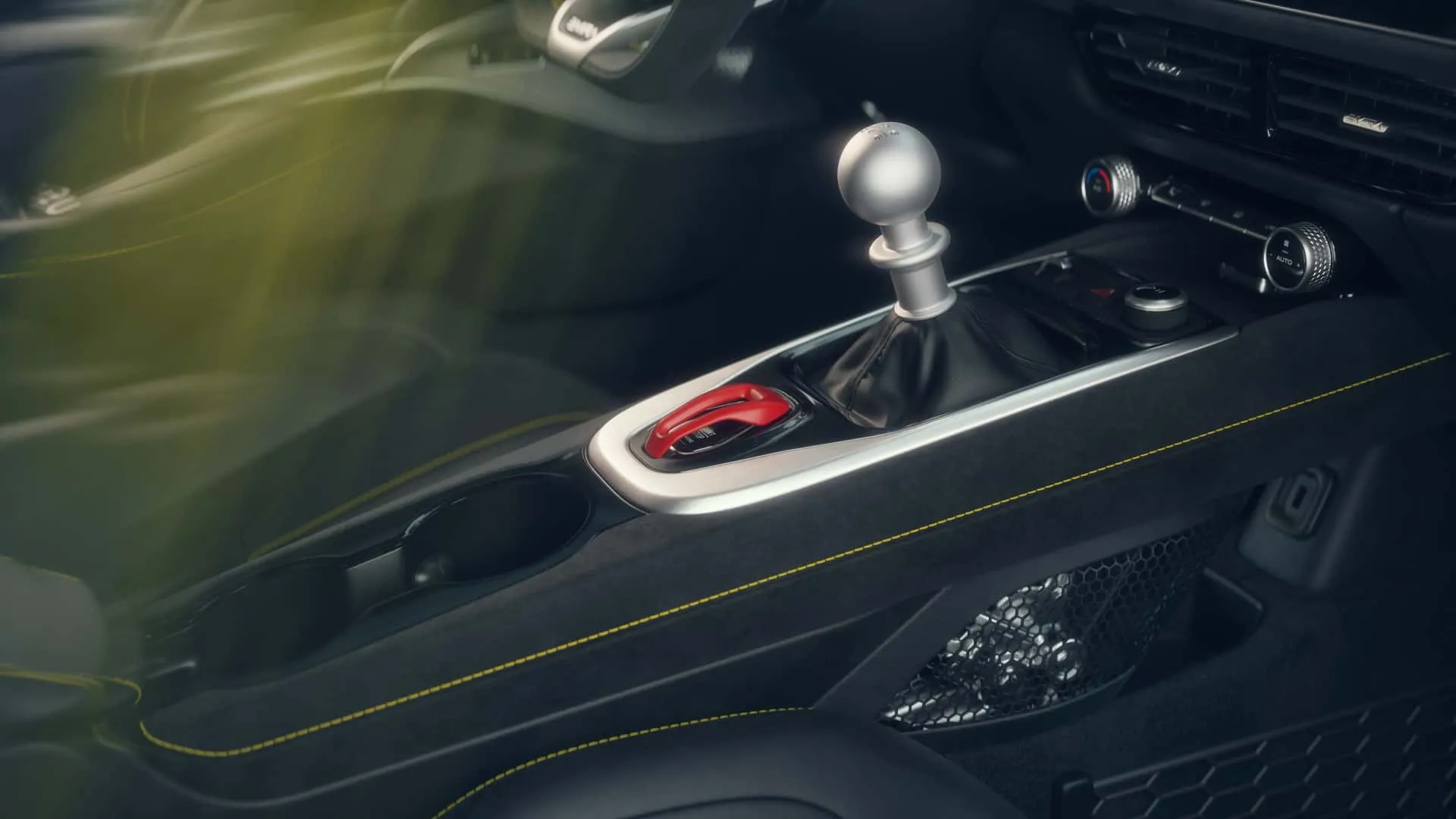
Availability varies greatly: in Europe, sales are open with deliveries starting September 2025; North America still accepts orders but import tariffs and geopolitical issues might delay things; serving the Asian market and expanding as possible. High volatility and part supply chains threatened by the global chaos, especially for the V6, so don’t delay if you’re eyeing it. Actually, it’s worth planning post-sale strategies and warranties, especially if you’re considering importing into regions where import costs are prohibitively high. If you want versatility and a premium SUV, compare it with the Hyundai Kona Hybrid, which arrives aggressively in the global market with advanced technology and price.
FAQ Lotus Emira 2026
- Is the Emira easy to use daily? It offers reasonable practicality for a sports car but doesn’t match Porsche with a frunk.
- What are the main disadvantages of buying? Shorter warranty than competitors, uncertain after-sales support, and the risk of the V6 engine disappearing from the market.
- Does it have international warranty? Yes, but it’s limited in time and less comprehensive than rivals; check regional details.
- Is it just for collectors? Not only, but enthusiasts and those seeking driving drama will enjoy the Lotus more than those seeking mere status and cold ostentation.
Where does the Emira excel and where does it fall short against rivals? (Bullet points)
- Real analog driving versus increasingly digital competitors
- Dramatic design versus better interior finish from German rivals
- Track drama, sound (V6) versus practicality in Alpine and Porsche
- Higher price for exclusive historical status
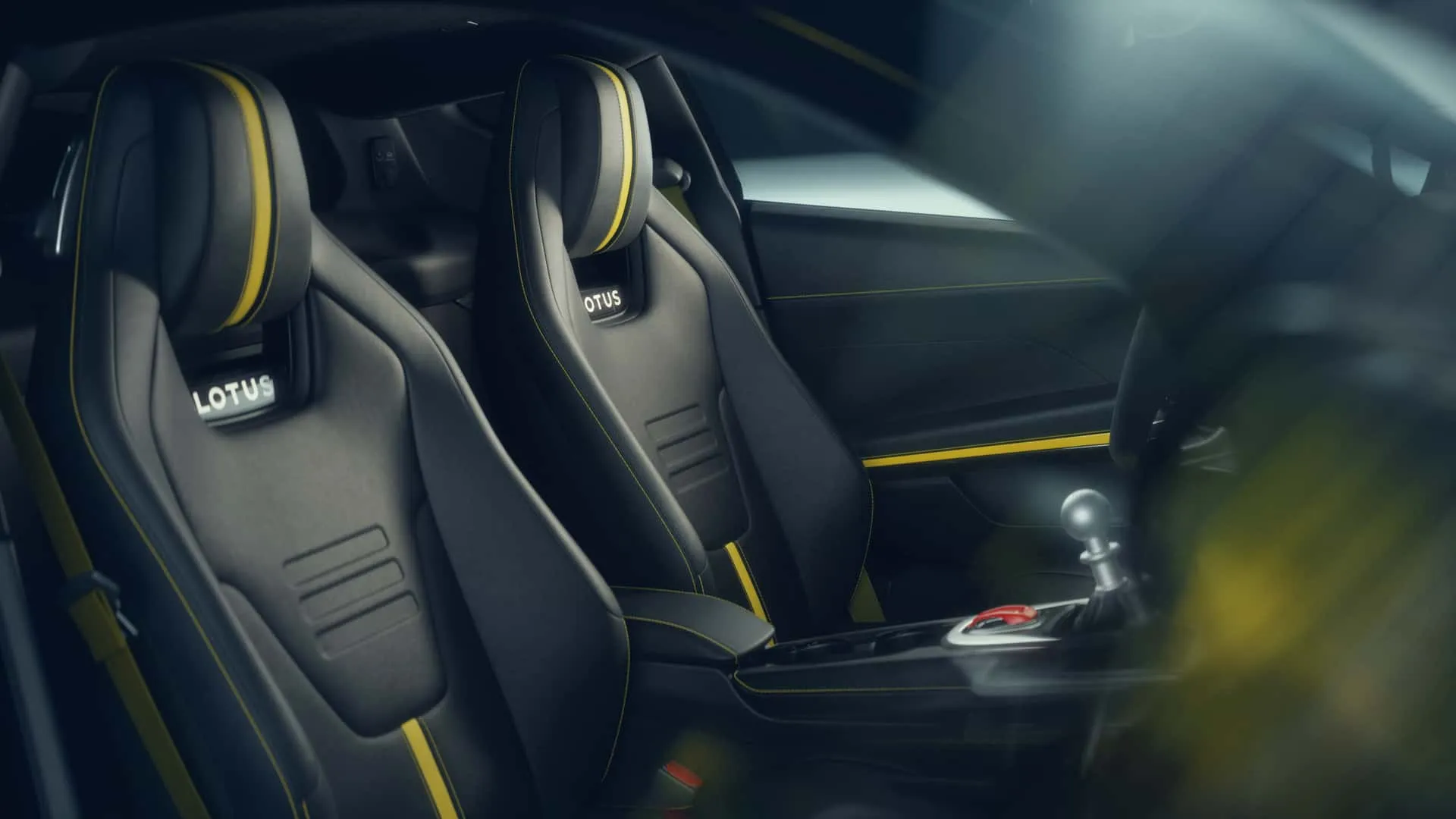
Want an honest opinion? The Lotus Emira 2026 is for real men—those who smell like gasoline, not spreadsheets. It’s not rational, it’s not for everyday comfort, and it won’t change your life in traffic jams. But it’s the kind of car that makes you feel something most electric vehicles can’t: a punch in the face every time you accelerate. If emotion, legacy, real driving, and challenge are your addiction, add the Emira to your list. For secure status, luxury, and build quality, look at Porsche. Want lightness and insane agility with less drama? The Alpine is your path.
For those excited about innovations and eager to explore the future of the sports car industry, it’s worth checking out what they’re already doing with Ducati XDiavel V4 in the motorcycle world and even bold urban electric bikes like LiveWire and Zero. And if luxury and innovation are your thing, don’t forget to compare with the Jeep Wagoneer S 2025.
So, would you dare to buy the last combustion Lotus, knowing all the risks and pleasures— or do you prefer to wash your hands of tedious electrification? Drop a comment with what you’d do (and don’t come with whining)!
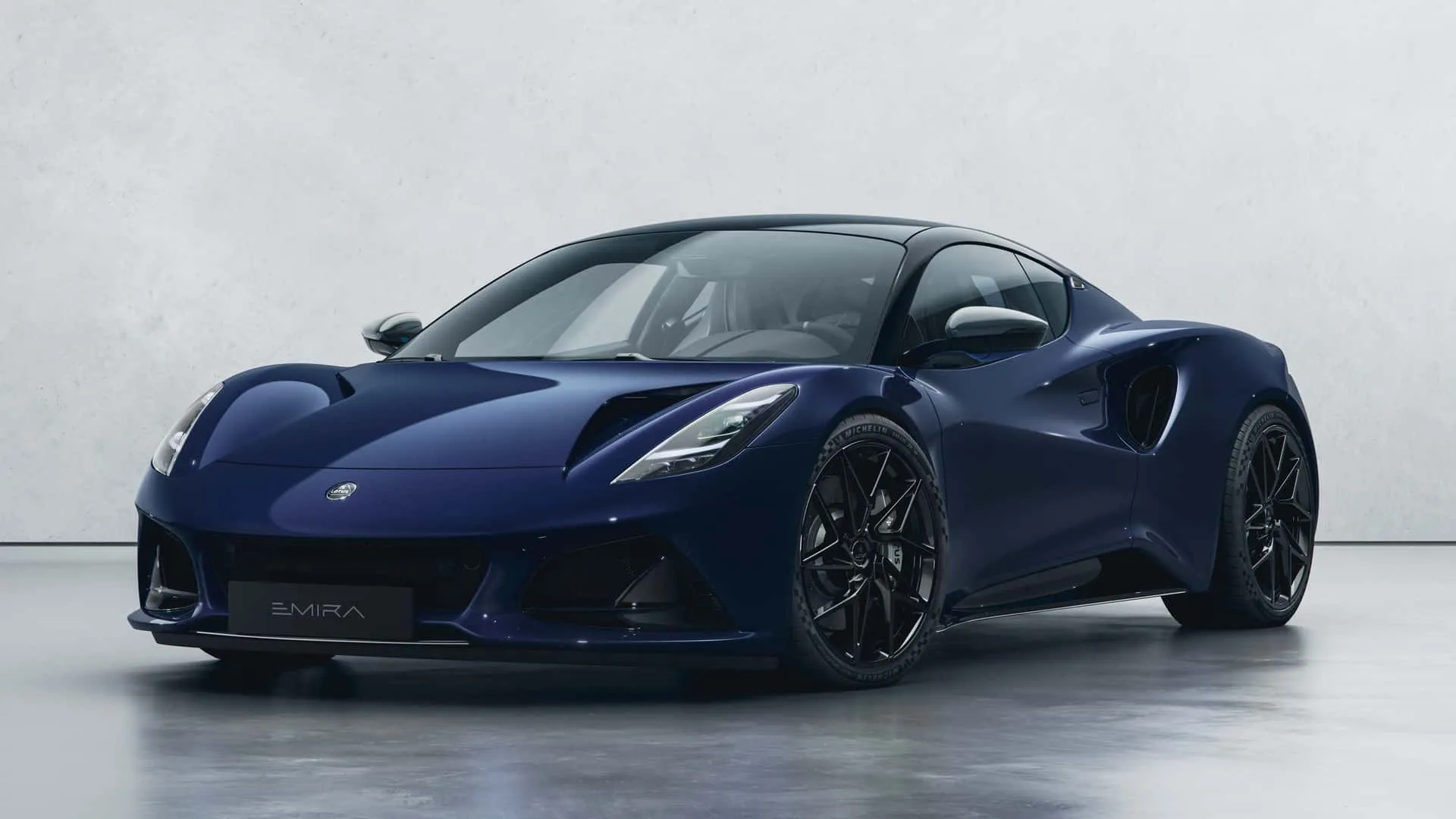
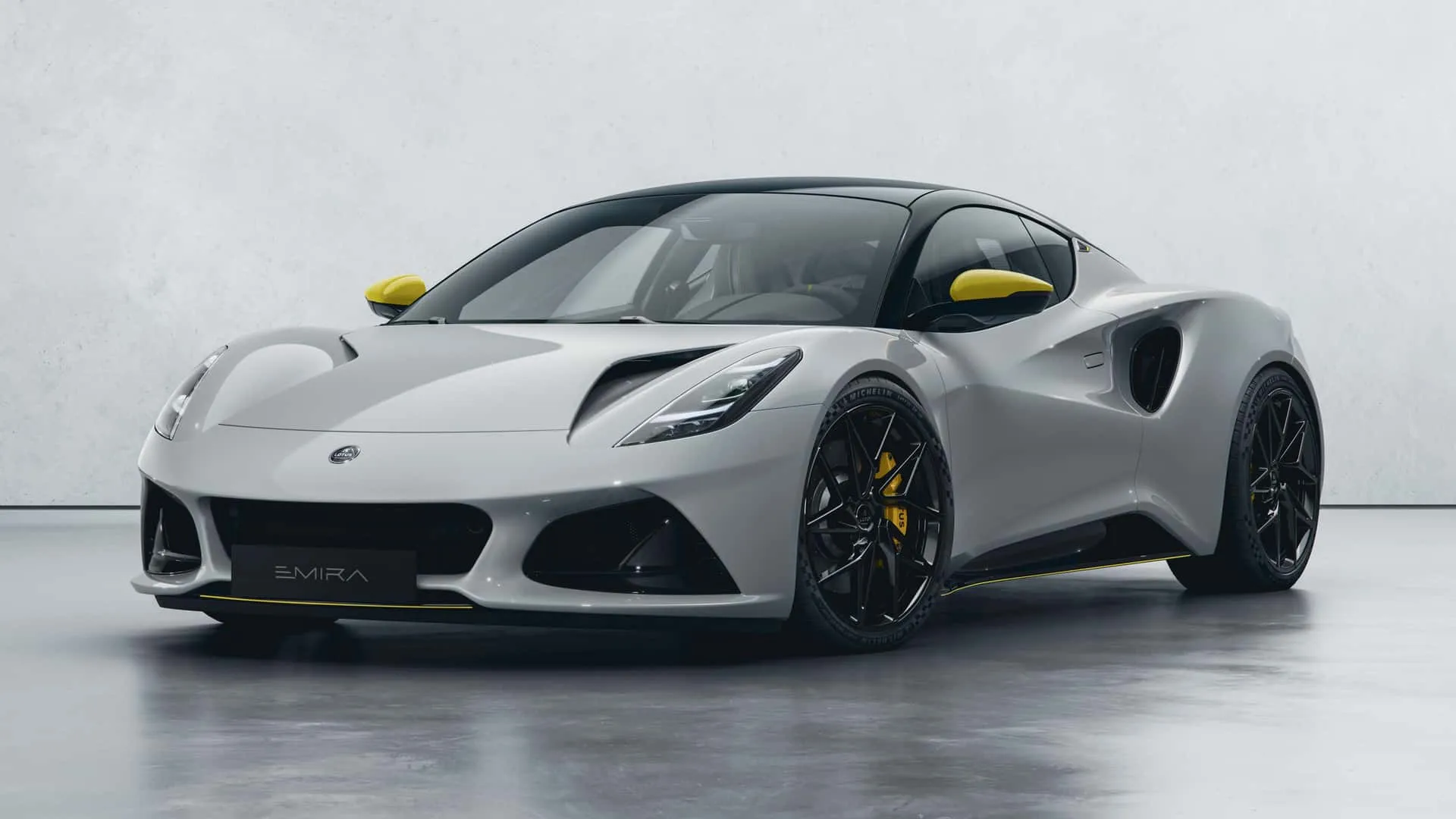
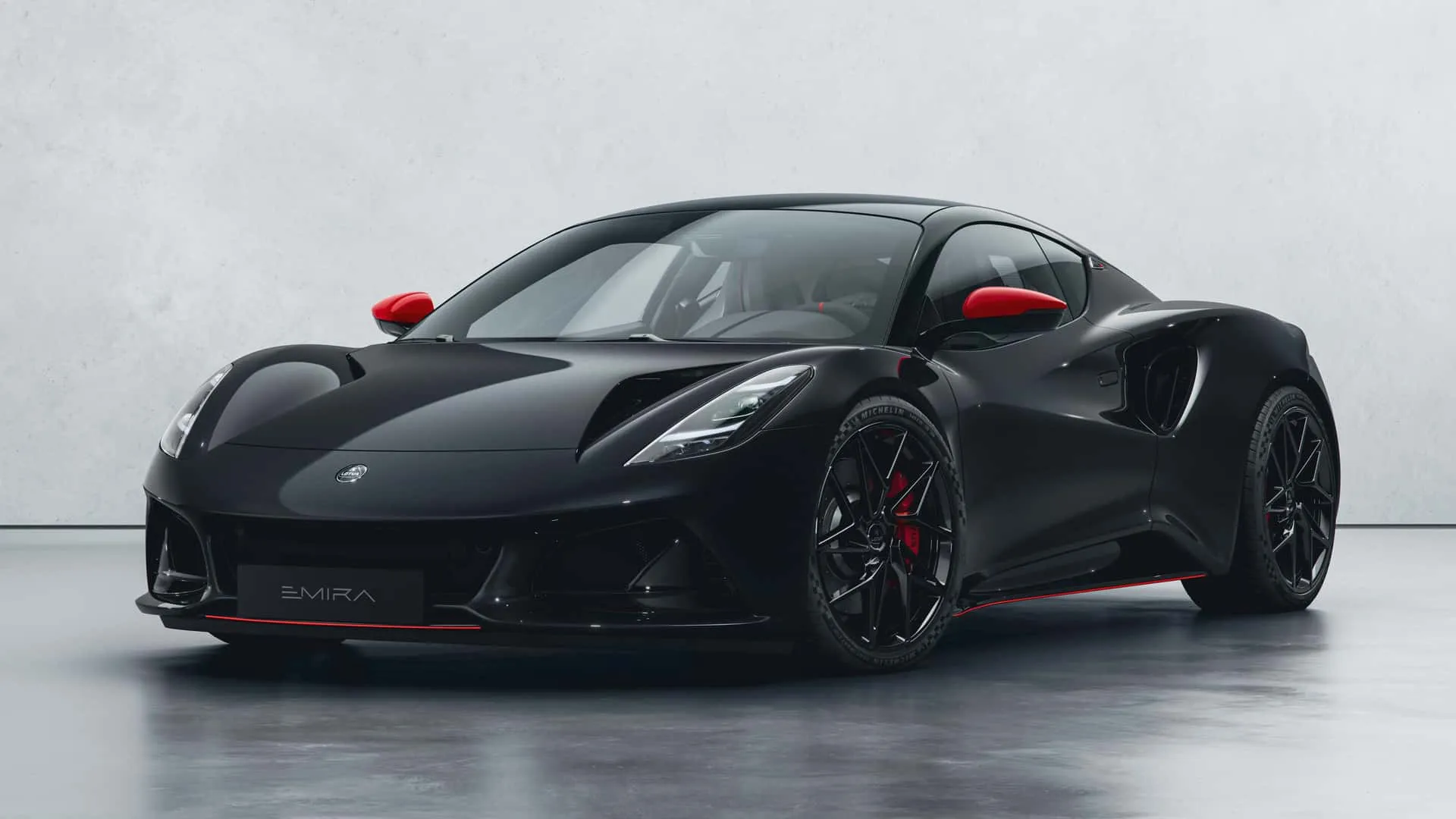
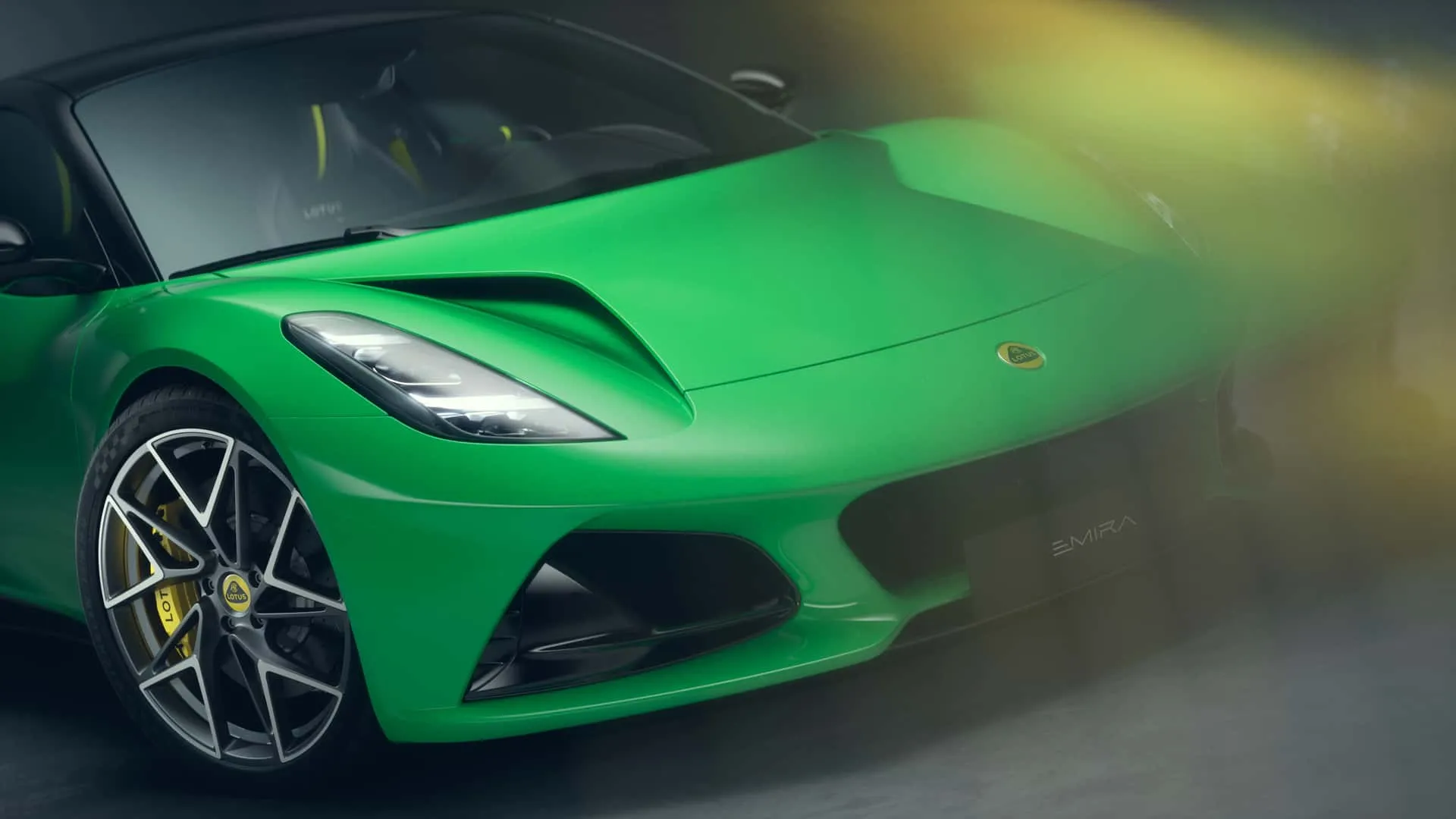

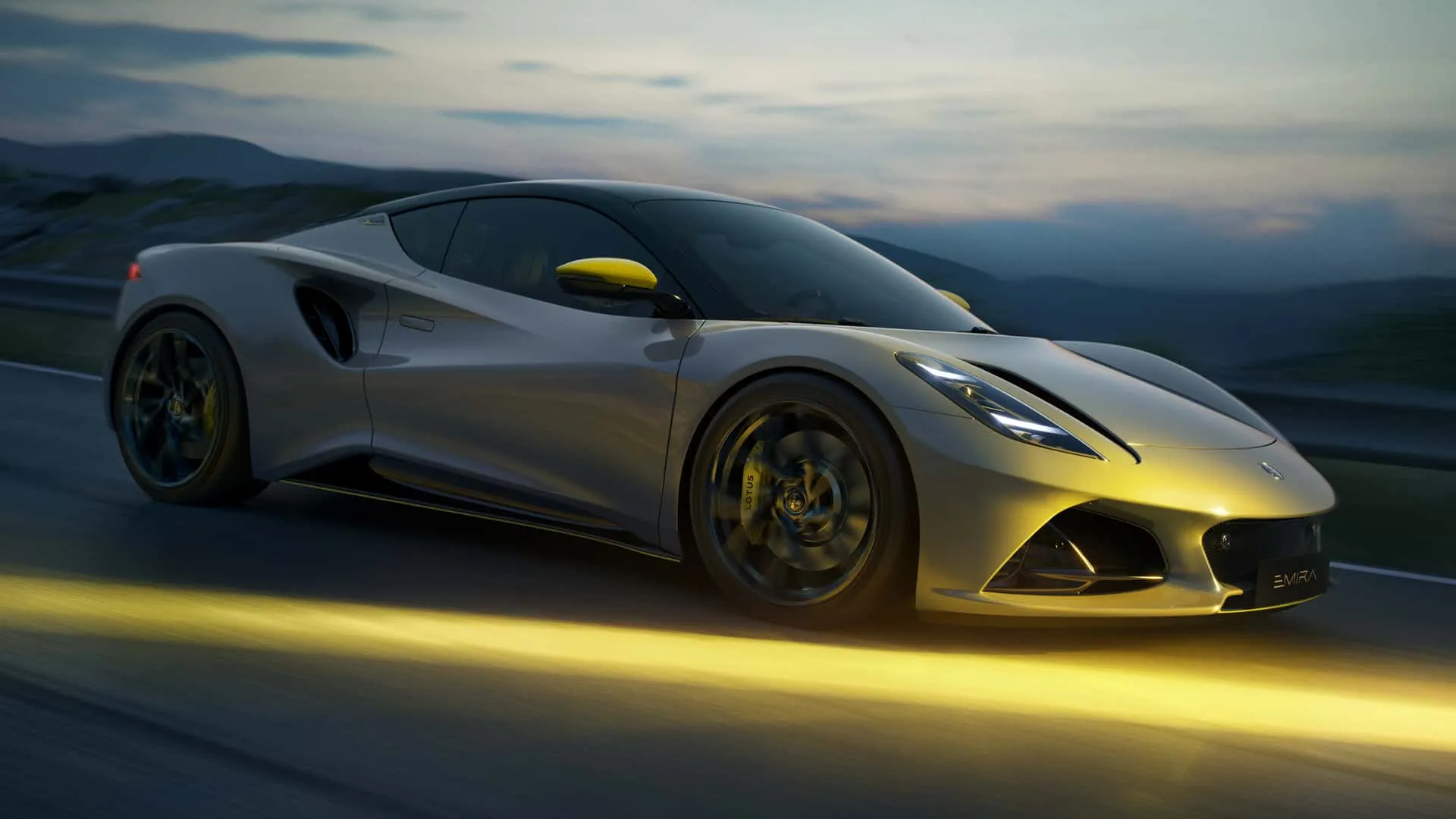
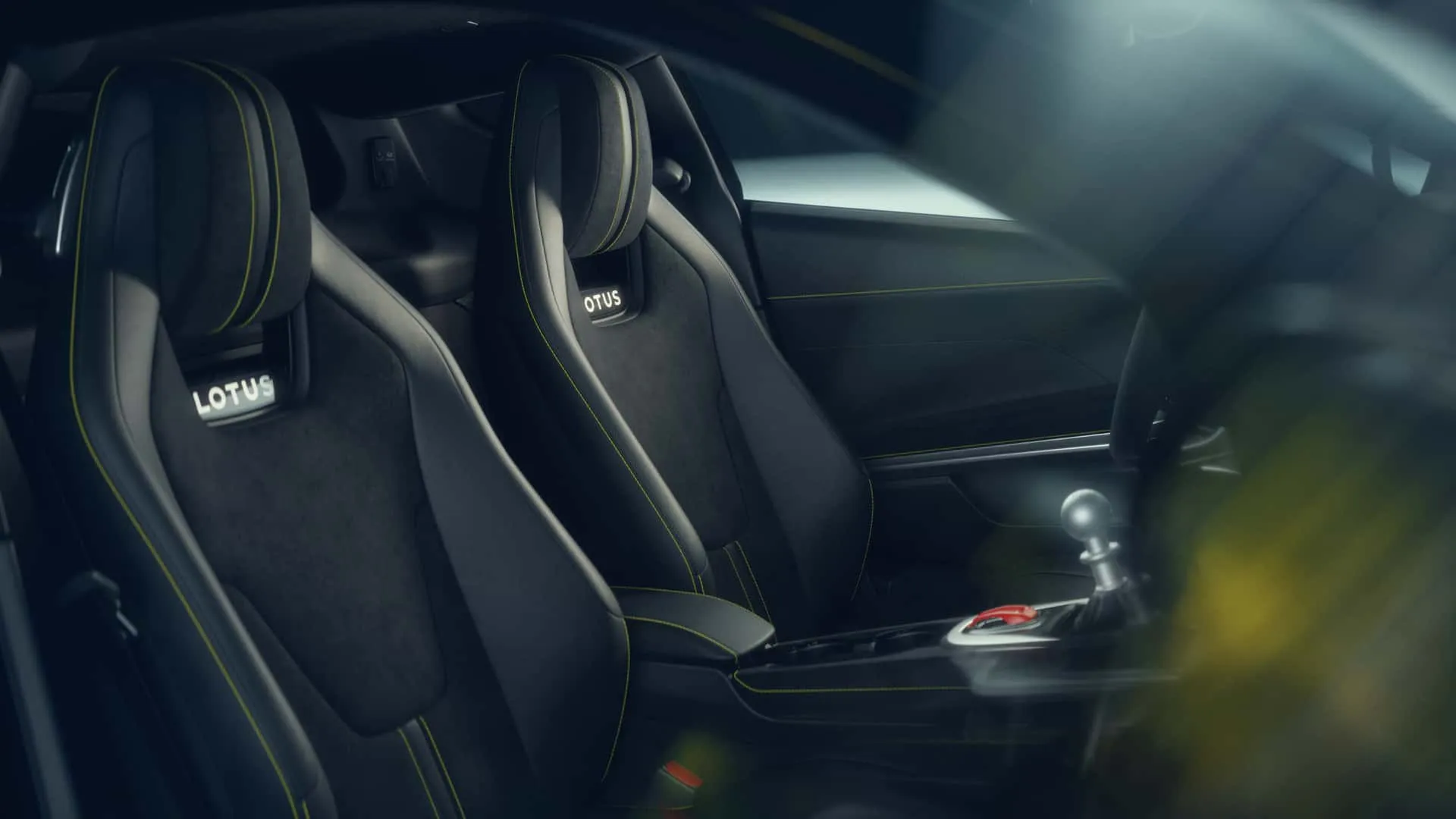


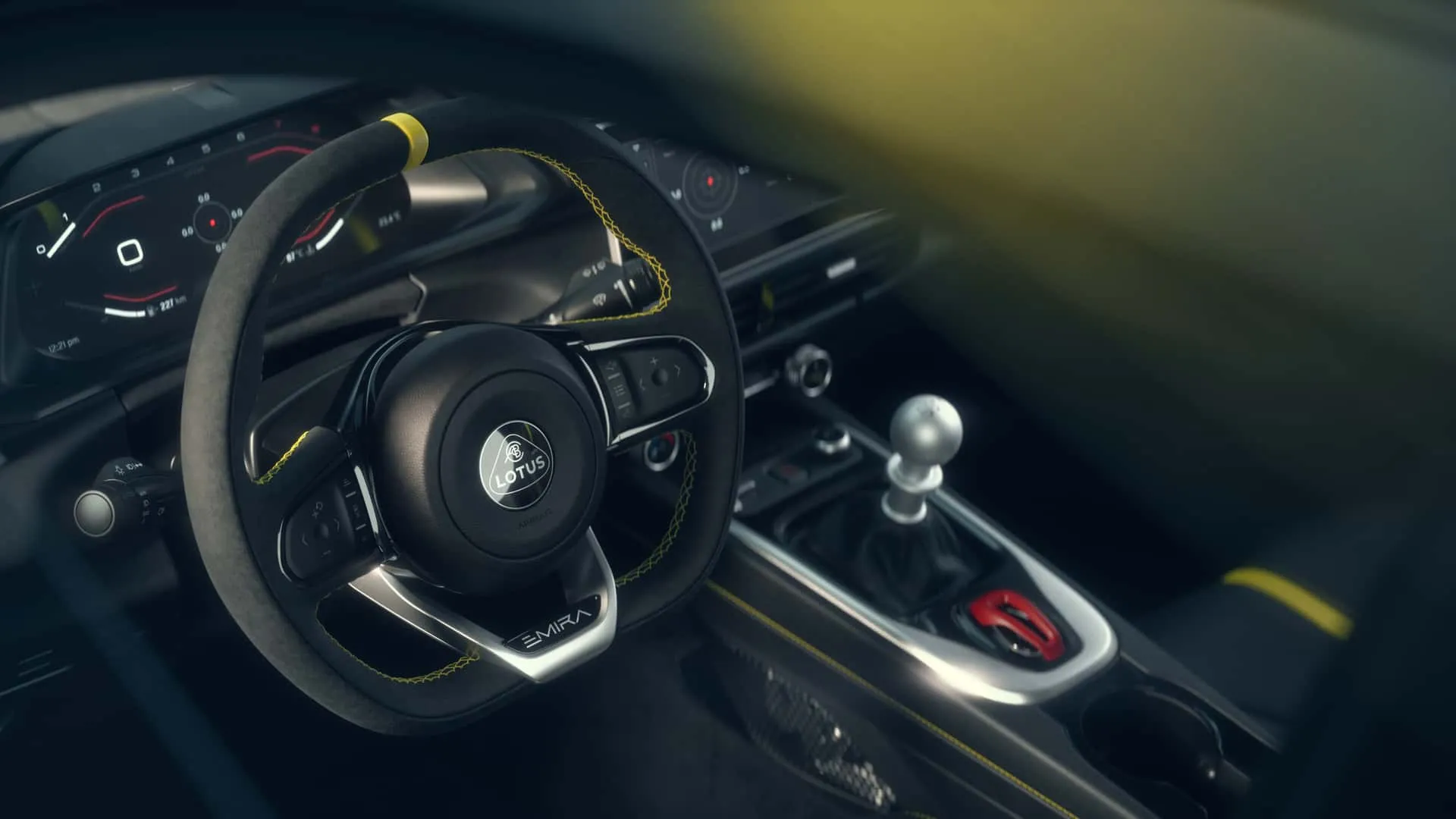
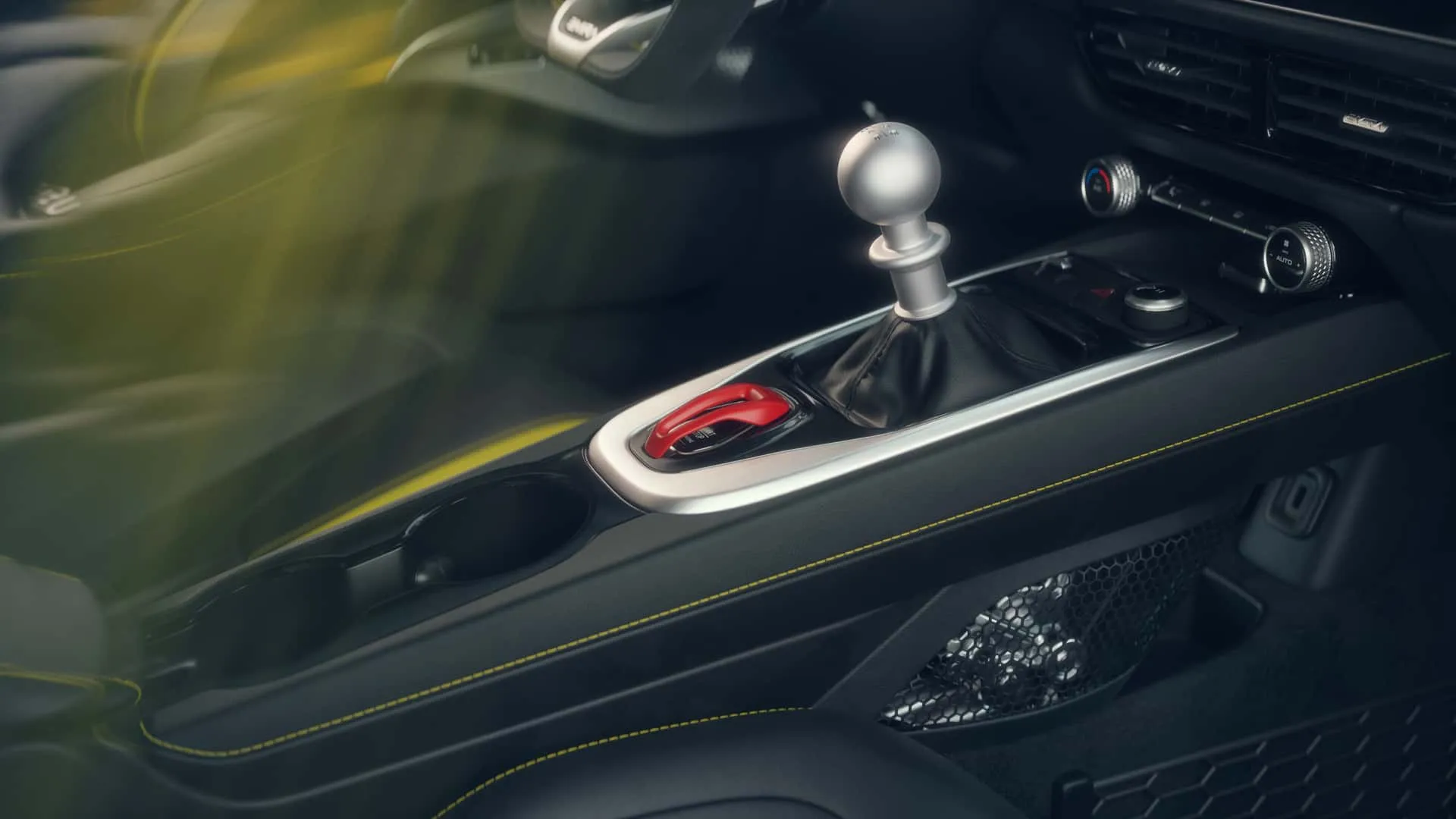
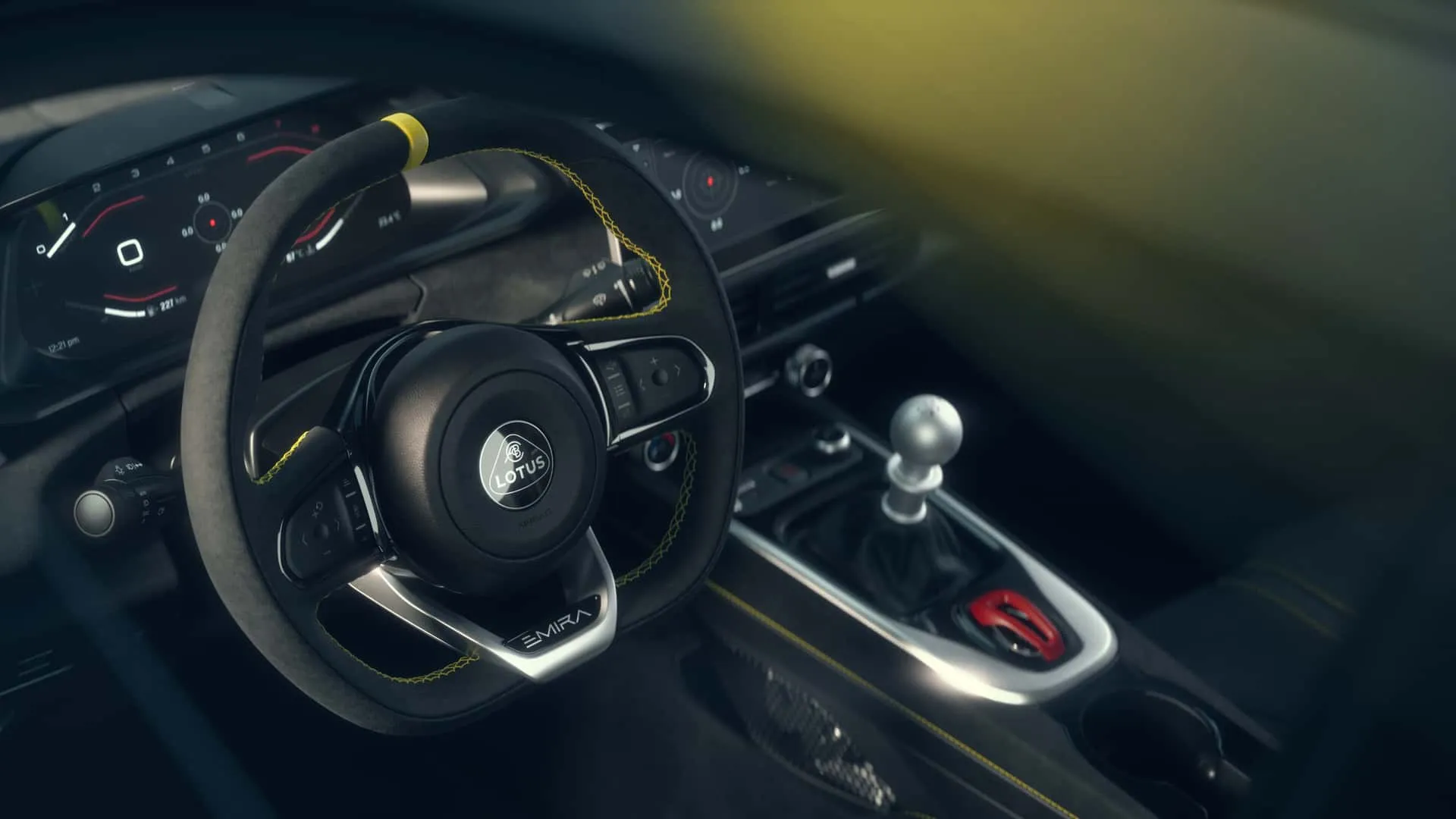


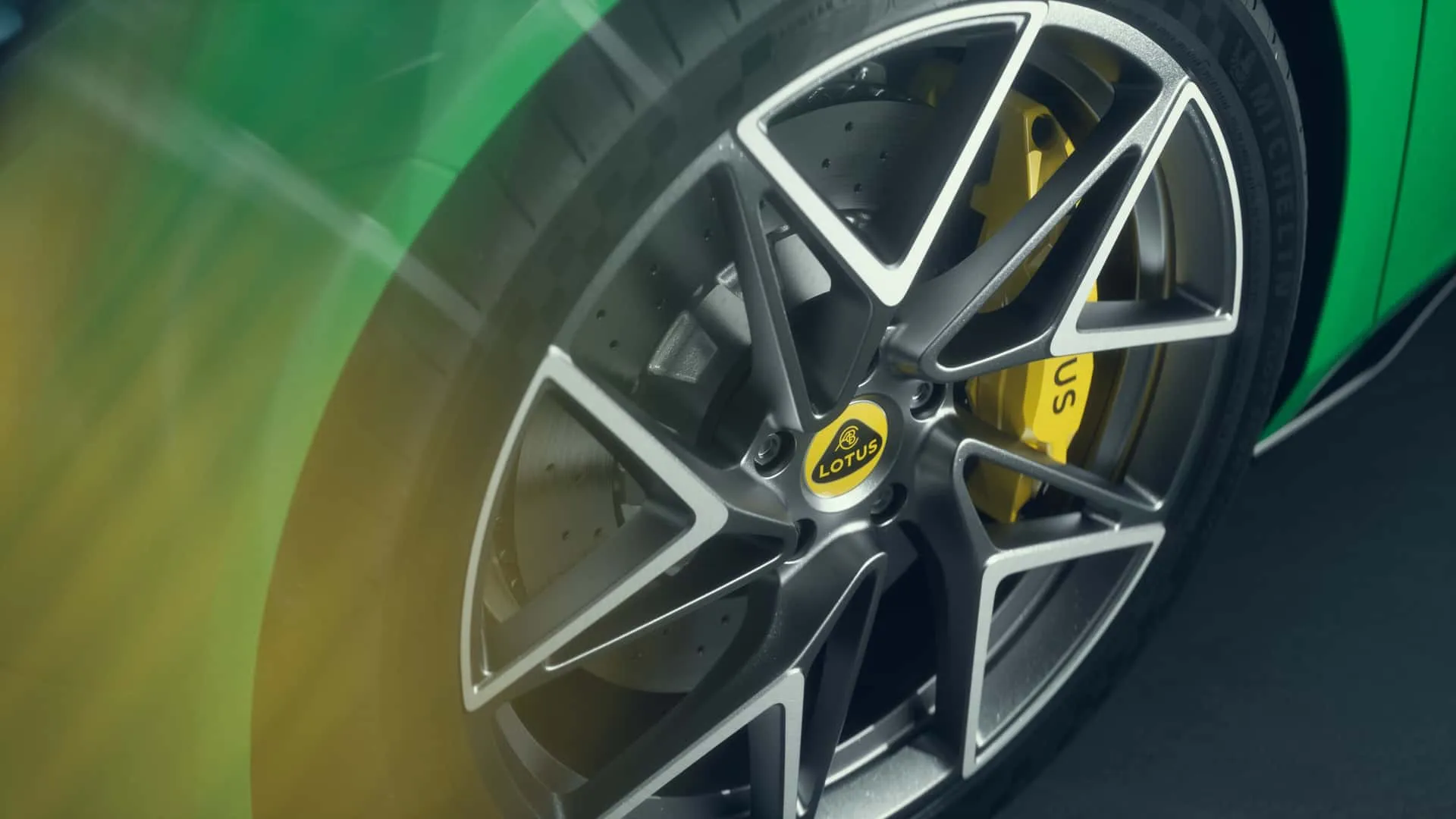
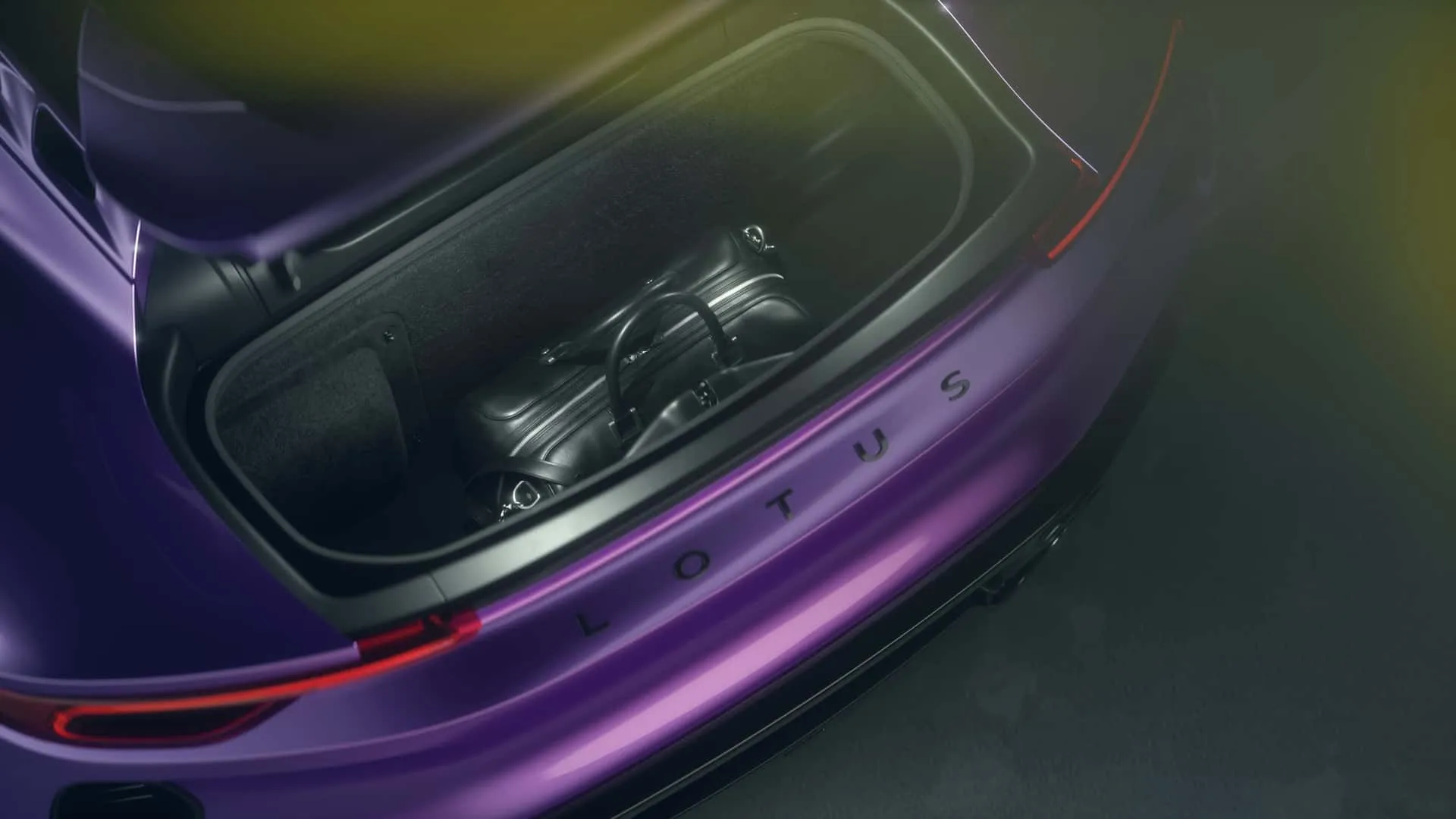
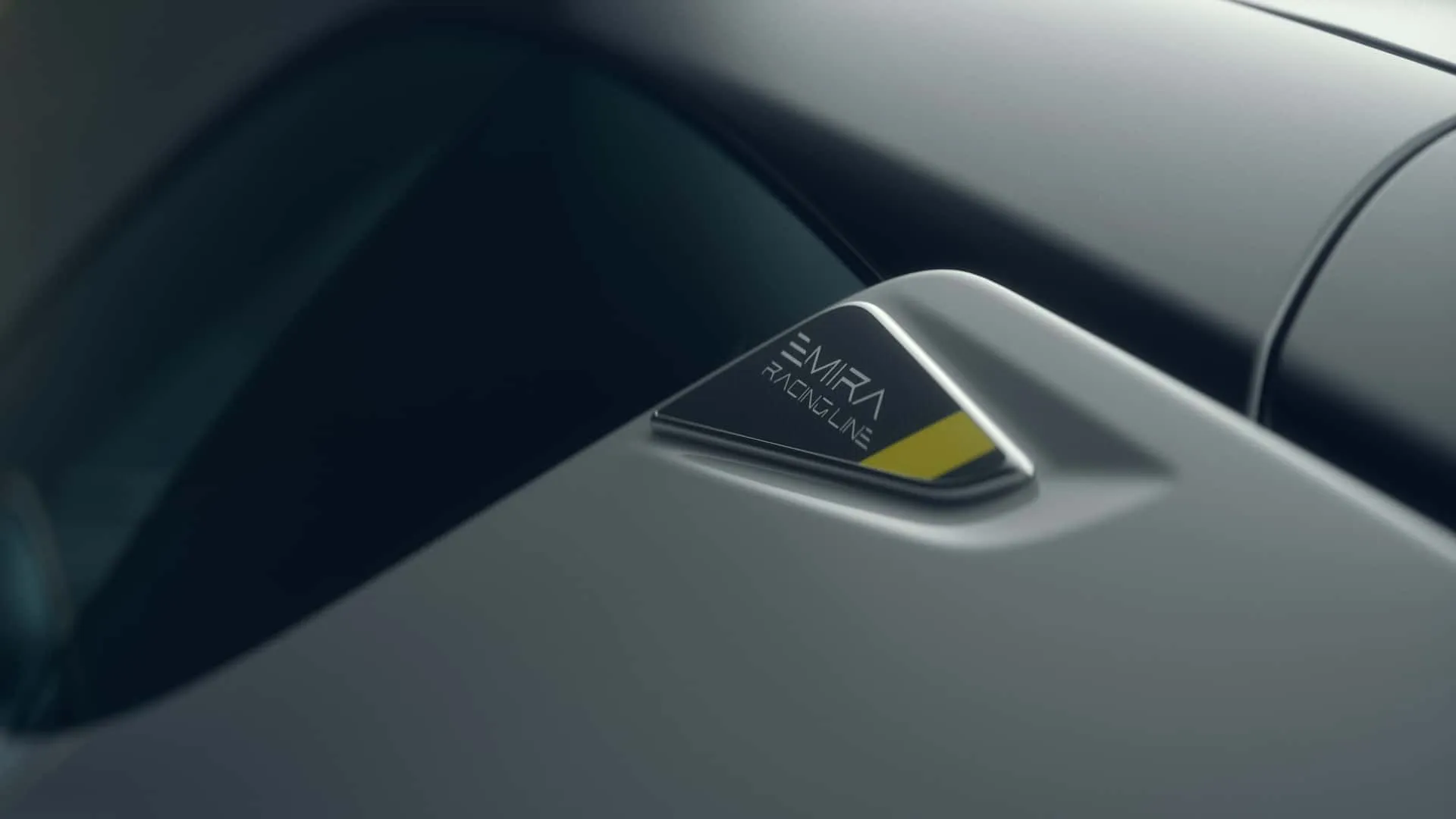
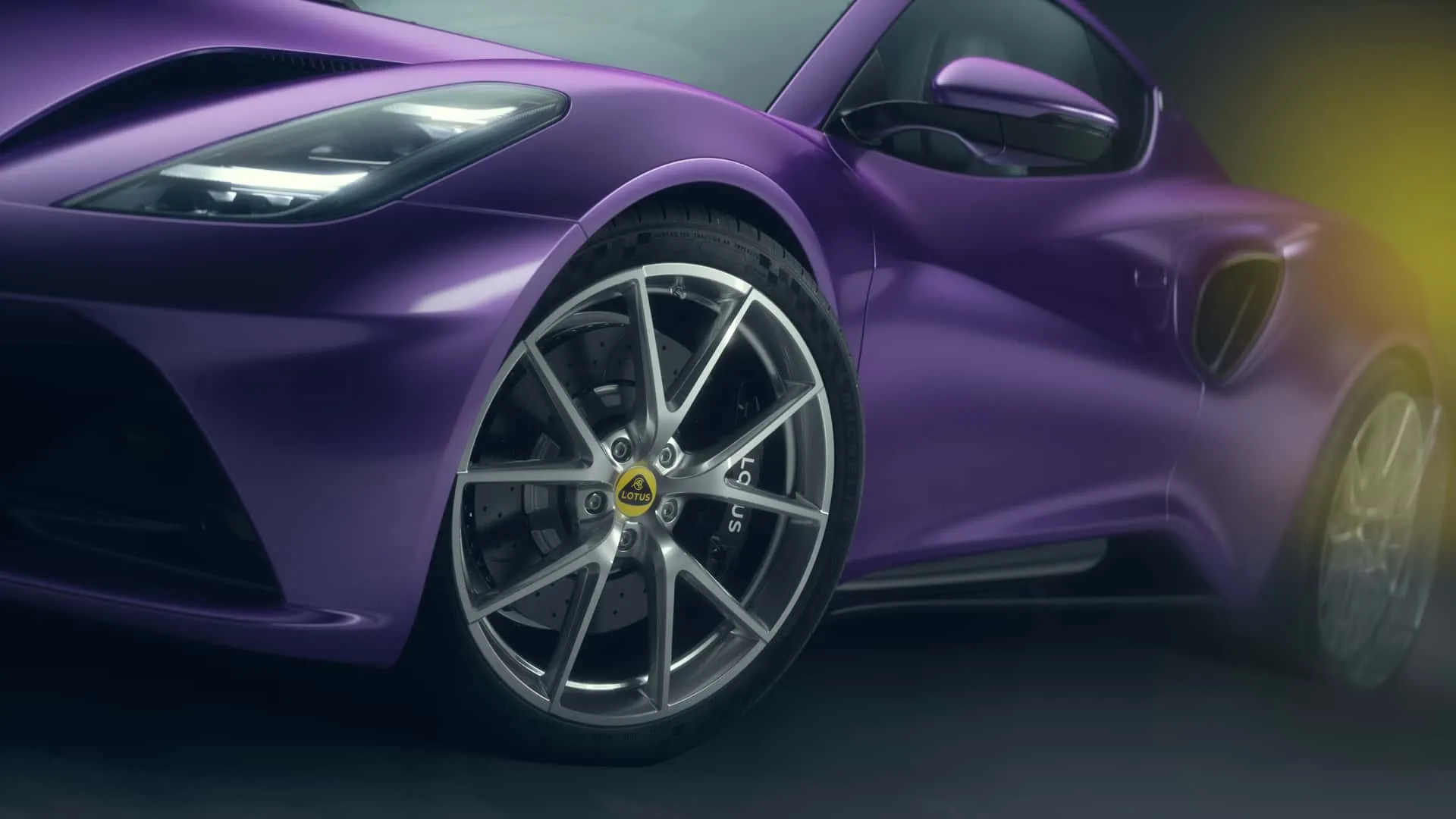
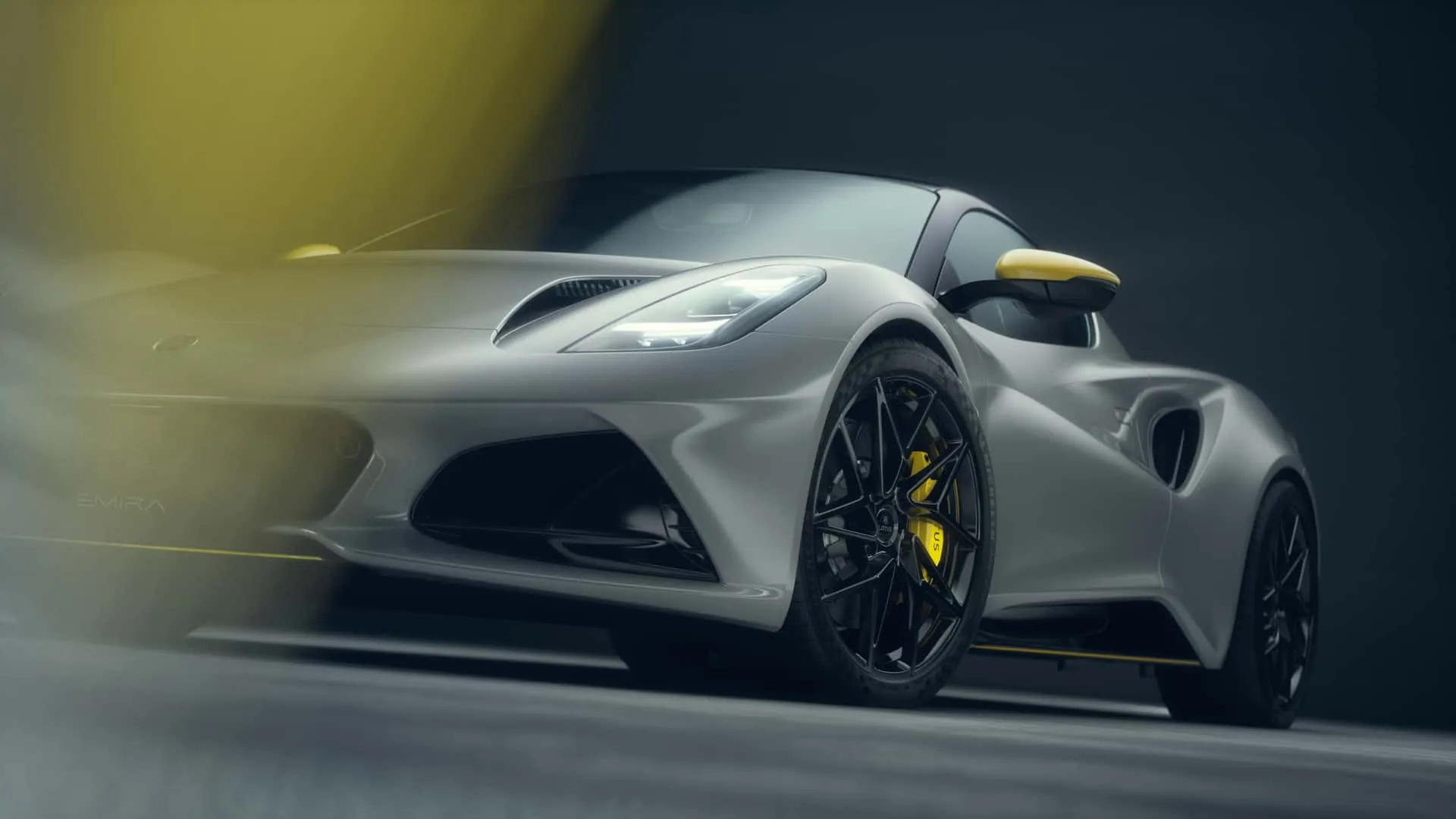
Author: Fabio Isidoro
Founder and editor-in-chief of Canal Carro, he dedicates himself to exploring the automotive universe with depth and passion. A car and technology enthusiast, he produces technical content and in-depth analyses of national and international vehicles, combining quality information with a critical eye for the public.

